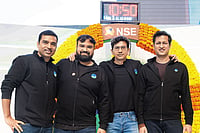While AI models exist, they have primarily learned from publicly available data, not enterprise-specific data. This presents both a challenge and a significant opportunity. However, AI will introduce even more complexities, said AS Lakshminarayan, MD and CEO, Tata Communications.
To add to it, ensuring security—protecting data, applications, and infrastructure—adds another layer of challenges. “With the adoption of AI, data itself is becoming more refined, but access to quality data is also diminishing,” said Lakshminarayan.
He further added, “Now, we are in the information age, which I see in four eras: the internet, mobile, cloud, and now AI. Each of these eras brought disruptions. The internet reshaped industries, particularly media. Blockbuster rentals, for example, went out of business. That was a disruptive shift.”
Lakshminarayan further added that, as the country enters the AI era, enterprises are rapidly moving toward what is called the hyperconnected ecosystem. The hyperconnected ecosystem is defined by four key traits: real-time operations that ensure constant connectivity, frictionless collaboration between people, devices, and AI agents, seamless intelligence that continuously learns and evolves, and technology convergence that accelerates enterprise growth, he added.
He further added that companies will start designing AI-ready architectures from the ground up. LLMs will be embedded into applications, not just attached as an afterthought. That is the future.
“However, we must ask ourselves: Are we ready? Do we have the right foundation to fully leverage AI? It all starts with data,” he added. Enterprise data architecture is highly complex. Compare this to national digital efforts like India’s Unified Payments Interface (UPI), which successfully unified financial data. Enterprises, in contrast, still struggle with data silos, he said.
He was speaking at the launch of Tata Communications’ next generation cloud fabric named Tata Communications Vayu in Mumbai. The event also saw the presence of Bhaskar Gorti, Executive Vice President, Cloud and Cybersecurity Services, Tata Communications.
To simplify, Cloud Fabric is a smart cloud system that connects different cloud platforms and computing resources into one efficient network. It helps businesses manage their cloud operations smoothly by integrating AI, security, and automation.
In July 2024, Tata Communications also developed Digital Fabric, a unified platform that integrates multiple digital solutions. This includes network, cloud, IoT, and interaction technologies. The company highlighted that this enables businesses to improve connectivity, and ensure seamless communication across different domains. Some of the use cases for the same includes its use cases in electric vehicles (EVs), supply chains, and logistics.



























